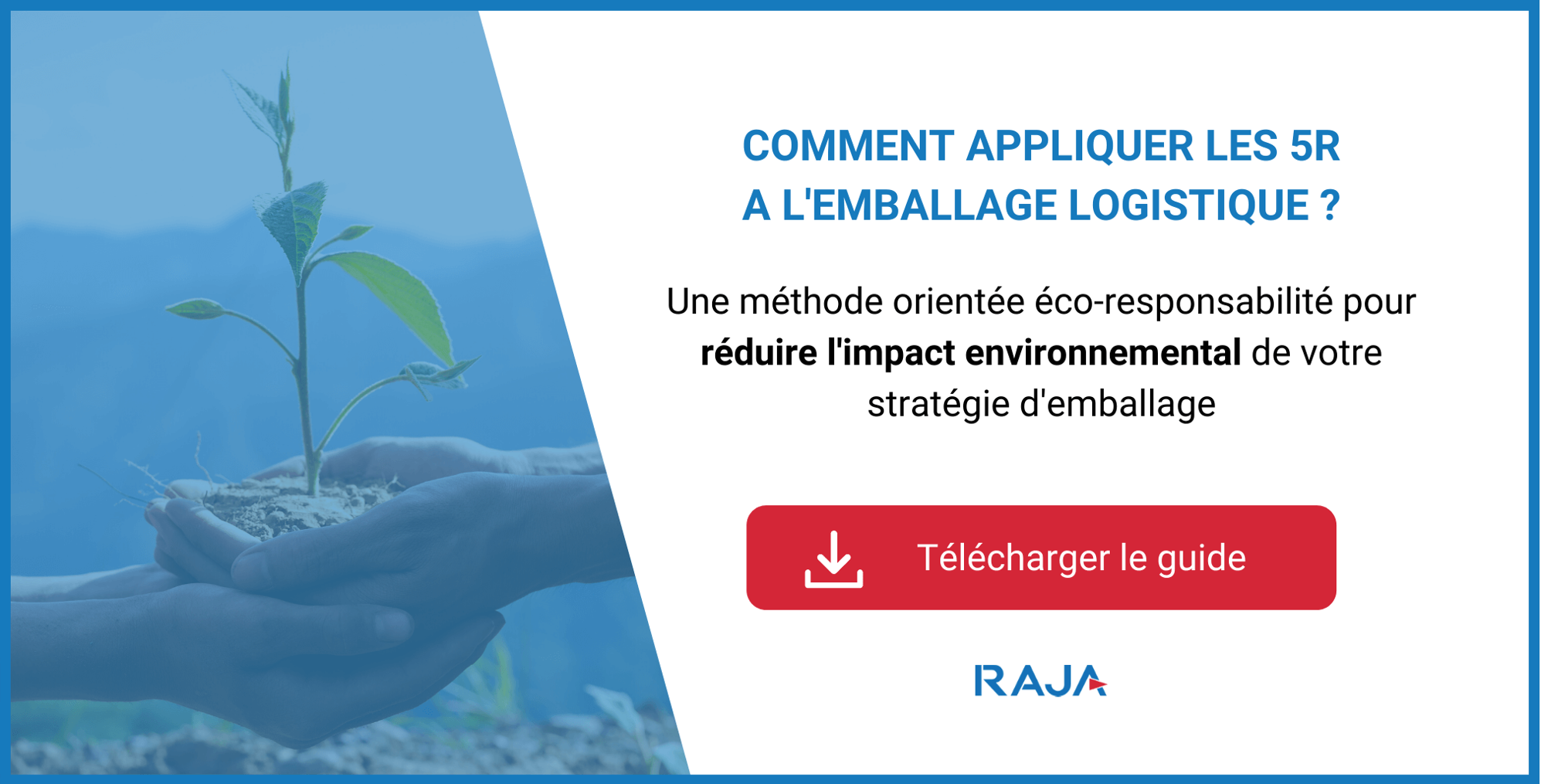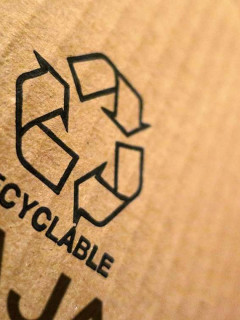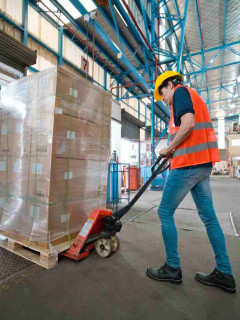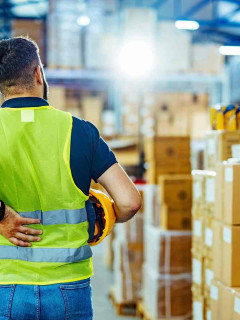As you well know, these days, whatever sector your business operates in, it’s out of the question to settle for packaging that isn’t very environmentally friendly.
The trend is towards eco-packaging: packaging that limits its impact on the planet and conveys an eco-responsible image of your brand.
To help you find your way around today’s range of eco-friendly packaging products, we’ve put together a list of the seven key eco-packaging trends of the moment.
Why should you be interested in eco-packaging?
If you’re interested in packaging methods that respect the principle of the circular economy, there’s a good reason: the fact that eco-packaging fits in perfectly with current consumer trends.
In fact, a Tonula study for Two Sides recently showed that 44% of consumers would be prepared to spend more on a product packaged with sustainable materials*, so by following this trend, eco-packaging improves your brand image.
But the benefits don’t stop there. Eco-packaging is also following another trend: that of European and French regulations, which are increasingly asking companies to make efforts in terms of the eco-responsibility of their packaging.
For example, the AGEC law aims to move away from single-use packaging and promote packaging recycling. For the time being, these regulations are mainly aimed at the catering and agri-food sectors – but it is expected that they will soon be extended to all business sectors.
The final reason to take an interest in eco-packaging is that it protects and enhances the value of your products. Today, there is a wide range of eco-packaging that allows you to retain the protective properties of your current packaging while having less impact on the environment. This eco-packaging enhances the value of your brand and provides optimum protection for your goods.
7 eco-packaging trends to consider incorporating into your logistics strategy
Need a clearer picture of all the types of eco-packaging available on the market? Here are the seven key eco-responsible trends of the moment and their advantages.
Recyclable packaging
Recyclable packaging is probably the best-known type of eco-packaging, and the most widespread in companies’ logistics strategies.
Recyclable packaging is designed to pass through sorting channels (from the consumer’s home or from a company sorting centre), to be processed and transformed into a secondary material that can be used to create new packaging or new objects.
The big advantage? Because your customers are familiar with the principle of recycling, they spontaneously know what end-of-life they should give them in order to respect the environment.
Inspiring examples of eco-friendly packaging
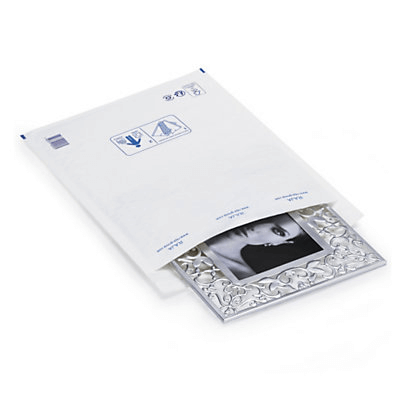 |
The padded bubble pouch makes selective sorting easy, as both the bubbles and the paper it’s made from are recyclable. It’s protective and shockproof, and its self-adhesive closure makes wrapping very simple. |
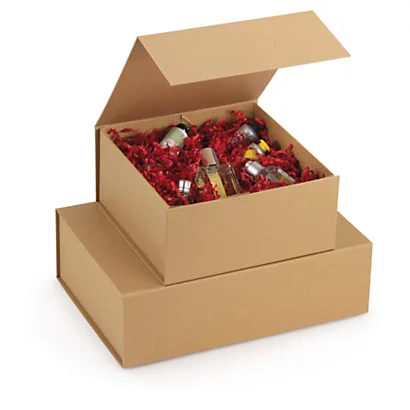 |
The kraft gift box with magnetic closure is also 100% recyclable, and highly protective thanks to its rigid cardboard covered in smooth kraft paper. Your customers will love its beautiful finish and visibly eco-responsible appearance. |
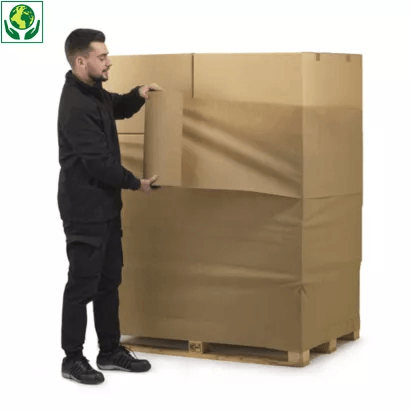 |
Manual palletising stretch wrap can be stretched by up to 30%, and allows you to stretch your pallets in an environmentally-friendly way, as it is totally recyclable. |
| Do you know all the eco-responsible labels and criteria?
To make sure that you’re guiding your customers through the end-of-life management of your eco-packaging, you need to be familiar with the labels and logos on your packaging. |
Packaging made from recycled materials
This second trend covers all packaging that comes from the recycling chain and is made from materials recycled from other packaging or objects. This could be packaging made from eco-responsible plastic, cardboard or kraft paper, for example.
Note that some of this packaging is also recyclable, compostable or single-material – but not all of it is.
Inspiring examples of eco-friendly packaging
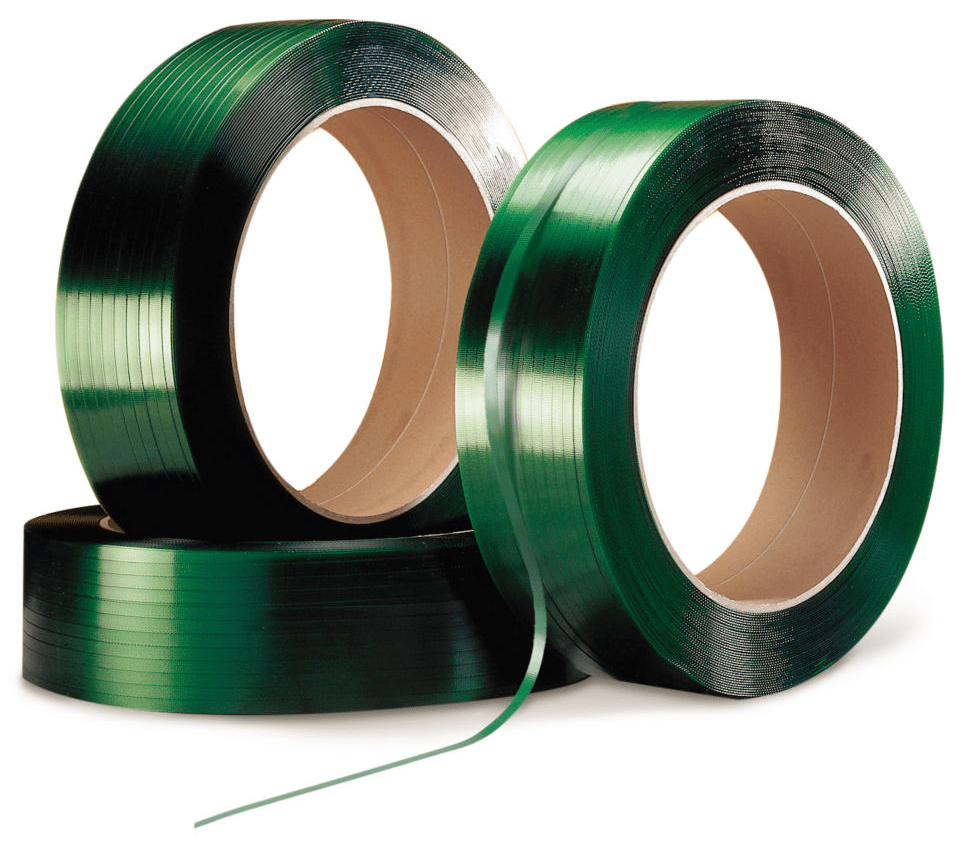 |
Recycled polyester strap is made from 100% recycled PES, but retains all the strength properties of traditional petro-sourced plastic strapping. Another advantage is that it is also safe and dimensionally stable. |
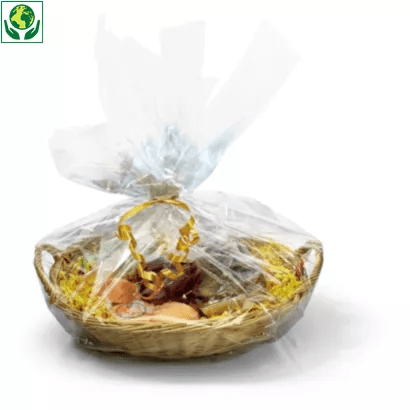 |
The 30% recycled transparent film is made partly from recycled PP plastic. It enhances your bouquets, arrangements or gifts, while protecting them from dust and the elements. |
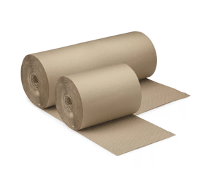 |
RAJA recycled bubble wrap is a real innovation: made from 100% recycled paper, it also absorbs shocks during delivery thanks to the air captured between its two layers of embossed paper. It conveys a truly eco-responsible image of your brand. |
Biobased packaging
Biosourced packaging is a term used to describe packaging made from materials that are renewable on a human scale – unlike packaging made from materials derived from non-renewable fossil fuels.
Biobased packaging can be made from :
- Corn starch
- Potato starch
- Fibrous residue from sugar cane (known as “bagasse”)
- Sugar from sugar cane or sugar beet
- Cellulose from wood or cotton
- reed fibre
Inspiring examples of eco-friendly packaging
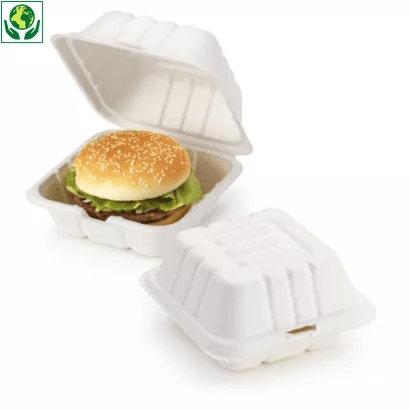 |
The sugar cane clamshell box is rigid and resistant to water and grease. Ideal for hot-filling your snack products. |
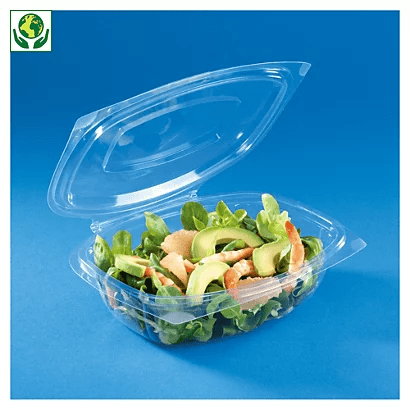 |
The corn starch can is not only highly attractive thanks to its transparent, environmentally-friendly plastic, but also perfectly leak-proof, for well-protected culinary preparations. |
 |
The 50% biobased pouch is made from 50% biosourced plastic, such as potato and maize starch, and 50% copolyester. It is also approved for food contact. |
Single-material packaging
As the name suggests, single-material packaging is made from a single raw material. This reduces the use of materials.
When they can be recycled, they can also go directly into the appropriate recycling stream, without the need to separate the different materials making up the packaging.
This can include :
- Certain plastic films
- Certain cardboard packaging
- Paper packaging
- Glass packaging
- Wood packaging
- Metal packaging
Inspiring examples of eco-friendly packaging
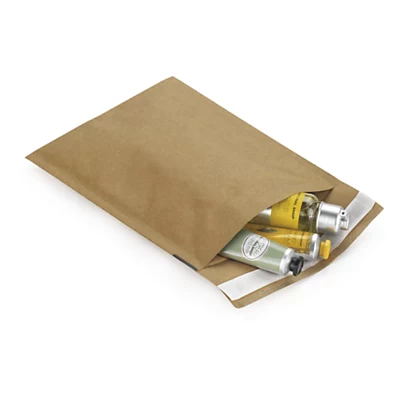 |
The 100% paper padded bubble pouch is a zero-plastic eco-packaging solution. Made entirely from paper, it is also resistant and protective, as well as being recyclable. |
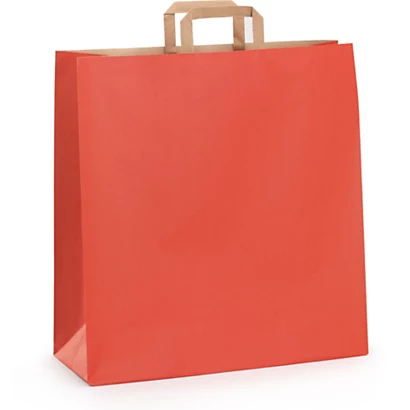 |
Kraft bags have become a one-material trend for shops looking to promote an eco-responsible image. Choose them in your company colours, and recyclable, to make the most of your brand image. |
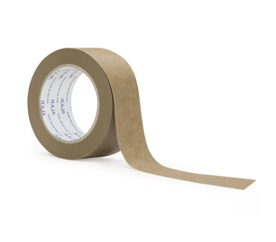 |
Kraft paper adhesive tape is biosourced, single-material and recyclable: three good reasons to add it to your recyclable containers, so that the whole thing can be sorted immediately. |
Compostable packaging
Compostable packaging is packaging made from materials that can degrade in nature without having a negative impact on it. Compostable packaging is ideal for the sale of takeaway food products, which often end up in the environment when eaten on the go.
This packaging is often made from the same materials as bio-based packaging. But these are tested to ensure that they can degrade in nature – so not all bio-based packaging is compostable.
This type of packaging can be composted:
- At home (when marked with the “Ok Compost Home” logo)
- In an industrial composting centre (when marked with the “Ok Compost” logo)
Inspiring examples of eco-friendly packaging
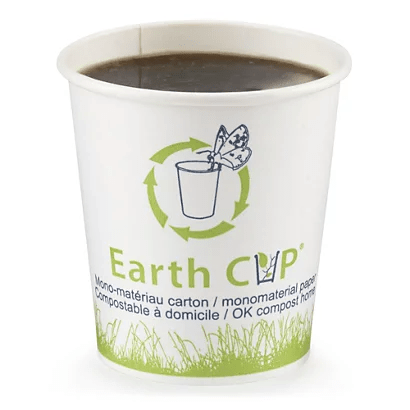 |
The Earth Cup is not only compostable, but also strong, insulating and watertight. |
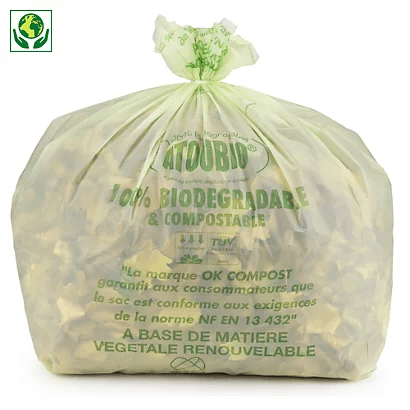 |
The 40% biobased bin liner is industrially compostable: ideal for perfecting your company’s waste management strategy. |
Reusable packaging
This type of packaging is designed to be used several times (often once by the company, and a second time by the end consumer). Reusable packaging eliminates environmentally damaging single-use packaging from your logistics strategy.
Reusable packaging is tested to withstand multiple uses, and made from materials such as cardboard thick enough to withstand multiple uses, or glass.
Inspiring examples of eco-friendly packaging
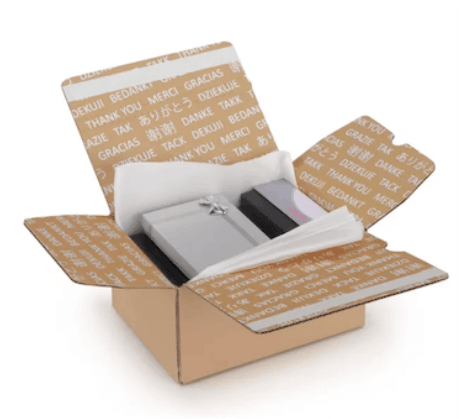 |
Returnable crates, cases, boxes and pouches make e-commerce returns easier for your customers, allowing them to send their goods back in the same packaging in complete safety. |
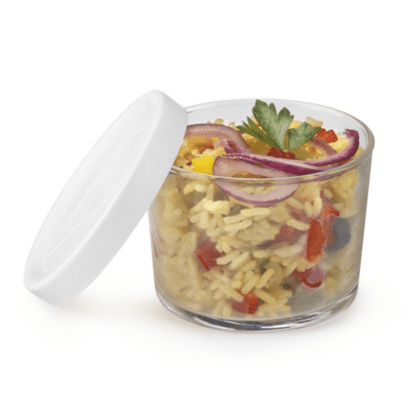 |
Glass food packaging are ideal for caterers who want to use packaging that is both attractive and eco-responsible. |
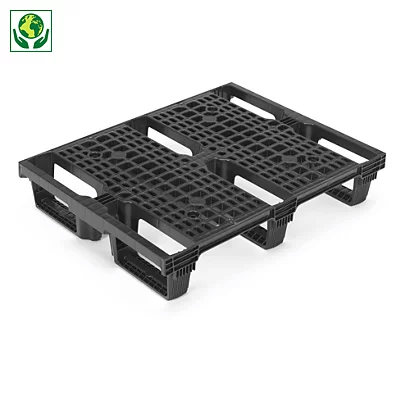 |
Reusable plastic pallets avoid the need for traditional wooden pallets, which are less resistant to multiple shipments. |
Eco-designed packaging
Eco-design is a method of creating sustainable packaging, which aims to take into account the entire life cycle of the packaging to ensure that it meets current environmental requirements.
When you eco-design your packaging, you ensure that each of its components is eco-responsible: main container, cushioning materials, printing ink, eco-labels, soluble glues, durable adhesives, etc.
To find out more about this latest trend, visit our article dedicated to eco-designed packaging.
So, which trends will you be turning to in order to meet the expectations of your customers and the ecological regulations in force?
* Source: Tonula study, 2020












